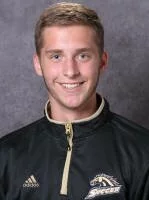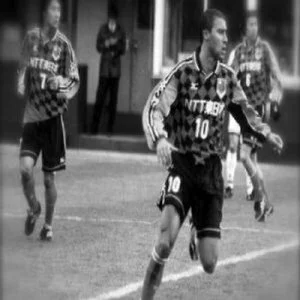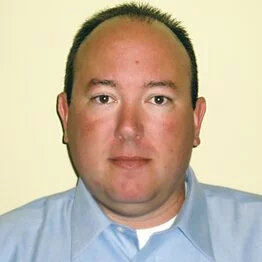CASE STUDIES
In the fall of 2009 I was asked to coach a U11 Girls team. I had just joined the club and was eager to get started with a young team. This would be a newly formed group. My daughter, who had played recreational soccer for the past 4 years, would also be trying out for the team. I knew this was an opportunity to develop young soccer players who were not thought of as “elite”, since most of the bigger clubs had already taken those players at the U8-U10 years. Youth soccer player development was something I was really getting interested in. I had a few years of coaching under my belt and I wanted to see how and/or if I could develop a group of players using my system.
Tryouts: The tryouts were simple. There were only 9 girls that showed up to tryout. This was a small club so we were not expecting many kids. The part that I enjoyed was that I would not have to cut anyone and all the kids that came out would get the opportunity to play soccer. The team played an 8 v 8 format in the league. So I knew we had to pick up a few extra players from somewhere. Luckily the U12 team in the same club was a very strong team in the area and also had 2 other players that were playing up a division, but were true U11 players. After speaking to the president of the club, it was decided that those two players would be asked to play and “dual-roster” with the U11 team to fill the roster. Out of 11 girls on the team, only 5 kids had experience playing travel soccer, so I knew I had my hands full, but was up for the challenge.
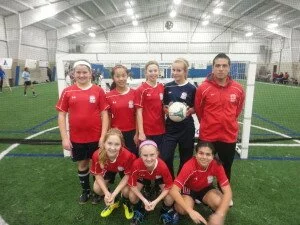
At the 3 v 3 tournament
Practice Begins: Youth soccer player development was a challenge. I had two kids who had been playing at a high level with the older U12 team and they would get frustrated when the rest of the team couldn’t keep up. I realized that the kids lacked technique and I was trying to teach them tactics. Through no fault of their own, the kids had never had specific technical training, and it was obvious. This is an important lesson, you cannot teach tactics until they have good ball control. I modified my training sessions to include 1 to 1 player to ball ratio 60-70% of the time. The rest of the time was split into 1 v 1 moves and 4 v 4 small sided games. The kids were getting tons of touches on the ball every single practice, twice a week. But the reality is that kids don’t practice during the summer months because, according to parents, it’s their “time off” from soccer. The other reality is that the majority of kids don’t play soccer unless it’s structured. So we had about 6 practices before our first game, for a total of about 9 hours of training.
Season Opener: The season opener started with a major defeat, 10-0. The second game, 14-1. I could tell the parents and kids were getting discouraged. The two “dual-roster” players didn’t want to be part of the team anymore. They were used to winning games. I sent out an email to the parents explaining my plan and begging for a chance to work with the kids. I explained to the parents that I was focusing on technique and if they stuck around, the girls would make big improvements, but they had to be patient with me. I also requested that the kids get to the field one hour before the game, to give the kids an extra hour of practice. Parents questioned, “what if the girls are tired by the time the game starts?”. I explained to them that the result of the game didn’t matter, the girls needed one on one time with the ball as much as possible. Surprisingly the parents agreed and followed my lead. They were putting their trust in me to develop their soccer player.
We played the same two teams (that beat us with a combined score of 24-1) towards the end of the season again and lost 5-0 and 4-0, respectively even without the help of the two dual roster players because by that time they were not coming to the games to get beaten. I could tell that the kids had improved from the start to the end of the season. I was overjoyed and sold it to the parents! They bought it, as they should have since it was a major improvement. I was very proud of the kids for working so hard for those 3 months. There had been some significant improvement. We ended the season with a 0-8 record, 48 goals scored against and only 2 goals forced all year long. I was able to keep the team together thanks to very understanding parents.
Here are the results posted on the league website:
Winter 2009-2010: Fortunately for our club we had our own private indoor facility in Michigan. While the rest of the clubs sat at home and played only on the weekends, our team did two training sessions every week and played in an indoor soccer league on the weekend. The team was doing about 15 hours of extra training each month. The training sessions were still mostly technical training, but it was obvious that the players were starting to gain confidence. I taught the girls some street soccer skills, introduced them to futsal, and even brought my computer to show some Messi and Ronaldo videos to the girls for inspiration. I had to make them fall in love with soccer, I knew it was critical that they get inspired by someone or something. They needed to find a passion so that they could start practicing on their own.
The 2010 Spring Season brought the first win to the team, however this was in the B Division. The team finished in the middle of the pack out of 14 teams, in 5th place with a 4-2-2 record. 30 goals forced, 14 goals allowed. We were moving forward and the parents and players were seeing some results.
2010 Fall Season: All of the players came back to tryouts, except for one that was injured. We picked up another 2 recreational players as well. We moved back up to the A Division. This time we finished with a 2-4-2 record, playing the same exact teams that had just wiped the floor with us 12 months ago. Major improvement from the previous year. The girls were getting very confident on the ball and we were starting to work on some tactics. Now they wanted to go to tournaments. I wanted to keep working on development. They saw every other team traveling all over the country for tournaments and camps, I just asked them to keep playing, on their own, with a sibling, or with friends.
Winter 2010-11: Now winter indoor trainings were divided into technical and tactical. The majority of the time we worked on dribbling, possession, and just plain ball control. I also added shooting and some 1 v 1 moves. Defense and Offensive tactics were also taught depending on the day. We also attended a small 3 v 3 tournament where the girls made the Final, but lost to a talented, hand picked, team from Chicago. There was nothing fancy or secretive about it, they just played and played. During indoor games, I prohibited the girls from playing the ball off the wall, while every other team would wait for the ball to bounce back to them. This was not about winning or looking good like the other clubs, I wanted them to develop.
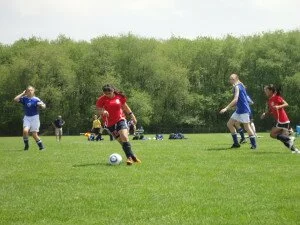
U12 playing vs TKO
Spring 2011 Season: By now the girls were starting to learn tactics and implementing them in the game. In the A Division, the girls finished 3-4-1. This was another step in the right direction. The parents continued to believe in what we were doing and were on board to continue the project. We also attended a tournament at the end of the season where we made the semi-final. Their confidence just kept growing along with their development. The most impressive part was that the team had never recruited a single player and the two best players that had started out with the team had left because they saw no hope for this team. We also kept getting beat by a certain team with very athletic players. I kept reminding the girls that once they learned to have complete control of the ball, they would be able to beat this team. The reason was that these athletic teams with no skill would not be able to keep up and would end up chasing the ball. This team kept winning the league (by U14 they couldn’t win any games).
Tryouts Summer 2011: The transition from U12 to U13 is always very hectic for clubs, teams, players, and parents. The problem is that in U12, each team only needs about 11-13 players, since only 8 play at a time. Once they move to U13, they now play 11 vs 11 and you need about 4-5 substitutes. So every team that existed at U12 must now get an additional 5-6 players. The reality is that some teams will cease to exist after this transition. I knew our team had made an impact around the league because I had parents from different clubs calling me asking if they could get on our team. Unfortunately there were some geographical problems since our club is outside a major metropolitan area. I think the fact that parents were requesting to get on our team was a sign that they respected and recognized the work that had been done by the team, coach, and parents. We came out of tryouts with our core group of 12 players, and added two more, for a total of 14. This was enough to get us through the season.
Fall 2011 Season: By this time, the team had been training for two years together. They were starting to really communicate and play together. They had developed into smart technical players that could play in any system. Additionally, 4 players had been invited to play on Premier level teams. The team finished with combined record of 6-2 and finished tied for 2nd place in Division A. The team scored 17 goals and allowed only 4.
Winter 2011-12: As soon as the season was over at the end of October, we quickly transitioned to indoor training in our private facility. This was a great opportunity to continue with the Youth soccer training and development. The team also played indoor soccer at the local indoor soccer arena. During that session, the team picked up two additional players that wanted to join our team. On two separate occasions, the parents had asked what I was doing to help the team play so well. I explained to the parents that I wasn’t doing anything different and invited them to train with our team so they could see what we do. I didn’t try to sell them on anything or recruit them, I just offered to help. As a matter of fact, I invited their entire team to join us. I had nothing to hide and didn’t really think I was doing anything special. Since we trained indoors anyway, I invited them to train with us anytime they wanted. Both players attended our trainings and decided that they liked what they saw. They soon got along with the rest of the team and they were asked to join us and dual roster. We never asked either one to leave their team, but if they had the time and desire, they could help us.
Additionally that winter I decided to take the next step in the development process and challenge the team by applying to play at the Elite level. I had a parent meeting and explained the reason I felt the kids were ready to play at that level. There were some concerns regarding the costs, travel, and competition. I was able to convince the parents and the team was accepted into the Elite Division. The cost to play was the same, but the travel was a little longer.
Spring 2012 Elite Division: That season the team not only proved that they belonged at the Elite level, but they were also one of the best teams. They ended the season in 3rd place! We also attended a tournament and received 1st place. All this was accomplished with the same core group of 8 girls that went 0-8, just 3 years prior. By this time several of the players were getting frequent requests from bigger clubs, including my daughter. The next Fall 2012, the team won the Elite Division. I stepped down as the coach due to other commitments with my business and coaching.
We started with 8 core players that stayed the entire coarse. They lost every game with 2 “dual rostered” players that were very good.
4 years later, that same core group had already been promoted to Elite league and won the league. The next season, all 8 players were offered spots on Premier teams, 1 went to MRL team.
I tell this story because it’s remarkable. I didn’t do anything special. youth soccer player development is not that difficult, but there are many out there that make it appear as if it was.
This is what I did to improve the youth soccer player development of each player.
1. Created an environment where they could make mistakes without judgement.
2. Taught them that soccer is supposed to be fun and if you are not having fun, you are in the wrong sport
3. Gave them players and teams to look up to (I would tell my fullback, wow that looked like Dani Alves, and she would ask who’s Dani Alves. The next session i would bring a video of Alves). I would show them a move and say, this is how Ronaldo does the scissors, then show them the video.
4. Had year round training sessions, NOT GAMES, just practice where they could make as many mistakes as possible. The practices were so loose and unstructured, that a parent once complained to me about the lack of structure. I told them YES, they are very unstructured and that’s how i plan them. FREE PLAY!
5. I did not allow them to use walls for support during indoor games or training sessions. I introduced them to futsal, even though a few parents didn’t like it, but it helped.
6. I had to rewire their brain and show them that when we are in possession of the ball, EVERYONE is on offense, including the goalkeeper. This was new to them because they were used to getting yelled at when they “left their position”. Now they all interchange positions without even thinking, which in turn improved their communication. It’s great to watch.
7. Worked on technique, but understood that they sometimes master their own technique. some kids pass really well with their outside. Not everyone shoots the same, ask Ronaldo.
8. I encouraged them to be creative and applauded anytime they tried it, whether it worker or not, winning or losing, didn’t matter, creativity was part of the development process. I would use the word “ole” when we did a good move, so much that the girls started using it as well.
9. I communicated with the parents always respecting their opinion on travel, costs, and tournaments, afterall, these were their kids, not mine.
This wasn’t just my doing, the kids also put in tons of hard work. I think they believed in the process a youth soccer player development and bought into it. They did their part by working hard. That’s the trick, is that they have to make it to practice, work on their own, and then it will pay off. It doesn’t matter if you have the greatest soccer coach, if the player is not motivated, forget it.
 nly 2 persons in the United States with a highest possible FIFA license. I can go on and on about his accolades, but you get the point, coach Tozer knows his stuff.
nly 2 persons in the United States with a highest possible FIFA license. I can go on and on about his accolades, but you get the point, coach Tozer knows his stuff.
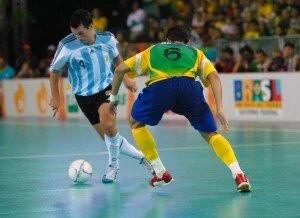 With coach Keith Tozer at the helm, Futsal in the United States has a good start. I hope to continue working close to coach Tozer and learning from him. Since finishing his course, I am now capable of understanding the tactics used in Futsal. More importantly I am capable of instructing the systems of play, the techniques, the movements, and patterns. From the Futsal 3-1, 2-2, to the Argentine’s 4-0. Another way the course had a huge impact on my Futsal education was on my continued educational development. I am not able to view videos, listen to other coaches, and watch Futsal matches, and understand the patterns and techniques.
With coach Keith Tozer at the helm, Futsal in the United States has a good start. I hope to continue working close to coach Tozer and learning from him. Since finishing his course, I am now capable of understanding the tactics used in Futsal. More importantly I am capable of instructing the systems of play, the techniques, the movements, and patterns. From the Futsal 3-1, 2-2, to the Argentine’s 4-0. Another way the course had a huge impact on my Futsal education was on my continued educational development. I am not able to view videos, listen to other coaches, and watch Futsal matches, and understand the patterns and techniques.



 developed into great players. They all started playing at very small clubs, and eventually sold to larger clubs.
developed into great players. They all started playing at very small clubs, and eventually sold to larger clubs.




